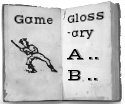Palant: Difference between revisions
(Change Game Eras from 1800s,Pre-1700,Post-1900 to 1800s,Pre-1700,Post-1900,Predecessor) |
Bsallardice (talk | contribs) No edit summary |
||
| Line 3: | Line 3: | ||
|Game Family=Baseball | |Game Family=Baseball | ||
|Location=Poland | |Location=Poland | ||
|Game Regions=Europe | |Game Regions=US, Europe | ||
|Game Eras=1800s,Pre-1700 | |Game Eras=1800s, Post-1900, Pre-1700, Predecessor | ||
|Description=<p>A Polish game. Chetwynd (2008) notes that Palant, similar to baseball, had a long history. | |Invented Game=No | ||
|Description=<p>A Polish game. Chetwynd (2008) notes that Palant, similar to baseball, had a long history. “Poland had played its own traditional bat-and-ball game - particularly in the areas of Upper Silesia and the Opole District - dating back centuries and, by the 1920s, the game of Palant had a popular following.”</p> | |||
<p>A Polish website describes Palant as using a rectangular field of about 25 yards by 50 yards, being governed by a clock, and having a provision by which, if a runner is hit, his teammates can enter play and retain their ups by plugging a member of the fielding team. David Block identifies Palant [Pilka Palantowa] as the Silesian game played in Jamestown VA in 1609 by a small group of Polish craftsmen.</p> | <p>A Polish website describes Palant as using a rectangular field of about 25 yards by 50 yards, being governed by a clock, and having a provision by which, if a runner is hit, his teammates can enter play and retain their ups by plugging a member of the fielding team. David Block identifies Palant [Pilka Palantowa] as the Silesian game played in Jamestown VA in 1609 by a small group of Polish craftsmen.</p> | ||
<p>Polish play is now reportedly resticted to rural areas.</p> | <p>Polish play is now reportedly resticted to rural areas.</p> | ||
<p> | <p> </p> | ||
|Sources=<p><span>Josh Chetwynd, | |Sources=<p><span>Josh Chetwynd, </span><em>Baseball in Europe: A Country by Country History</em><span> (McFarland, 2008). page 219.</span></p> | ||
<p><a href="http://www.google.com/translate?hl=en&ie=UTF8&sl=auto&tl=en&u=http%3A%2F%2Fwww.grabow.com.pl%2F%3Fregulamin-gry-w-palanta">http://www.grabow.com.pl/regulamin-gry-w-palanta</a></p> | <p><a href="http://www.google.com/translate?hl=en&ie=UTF8&sl=auto&tl=en&u=http%3A%2F%2Fwww.grabow.com.pl%2F%3Fregulamin-gry-w-palanta">http://www.grabow.com.pl/regulamin-gry-w-palanta</a></p> | ||
<p><a href="http://www.ghs-mh.de/traditions/topics/health/sports_pl.htm">http://www.ghs-mh.de/traditions/topics/health/sports_pl.htm</a></p> | <p><a href="http://www.ghs-mh.de/traditions/topics/health/sports_pl.htm">http://www.ghs-mh.de/traditions/topics/health/sports_pl.htm</a></p> | ||
<p><span><span>D. Block, | <p><span><span>D. Block, </span><em>Base Ball Before We Knew It</em><span> (UNebraska Press, 2005), page 101.</span><span> </span><span>Protoball entry [[1609.1]] summarizes the Jamestown account.</span></span></p> | ||
|Comment=<p><span>See the article on palant and other early European bat-ball games. Lidstrom and Bjarsholm, </span><em>Batting, Running, and ‘Burning’ in Early Modern Europe: A Contribution to the Debate on the Roots of Baseball</em><span>, International Journal of the History of Sport (2020), at </span><a class="external free" href="https://www.tandfonline.com/doi/pdf/10.1080/09523367.2020.1714597" rel="nofollow noreferrer noopener" target="_blank">https://www.tandfonline.com/doi/pdf/10.1080/09523367.2020.1714597</a></p> | |||
|Has Supplemental Text=No | |||
}} | }} | ||
Latest revision as of 07:00, 13 April 2025
| Game | Palant |
|---|---|
| Game Family | Baseball |
| Location | Poland |
| Regions | US, Europe |
| Eras | 1800s, Post-1900, Pre-1700, Predecessor |
| Invented | No |
| Tags | |
| Description | A Polish game. Chetwynd (2008) notes that Palant, similar to baseball, had a long history. “Poland had played its own traditional bat-and-ball game - particularly in the areas of Upper Silesia and the Opole District - dating back centuries and, by the 1920s, the game of Palant had a popular following.” A Polish website describes Palant as using a rectangular field of about 25 yards by 50 yards, being governed by a clock, and having a provision by which, if a runner is hit, his teammates can enter play and retain their ups by plugging a member of the fielding team. David Block identifies Palant [Pilka Palantowa] as the Silesian game played in Jamestown VA in 1609 by a small group of Polish craftsmen. Polish play is now reportedly resticted to rural areas.
|
| Sources | Josh Chetwynd, Baseball in Europe: A Country by Country History (McFarland, 2008). page 219. http://www.grabow.com.pl/regulamin-gry-w-palanta http://www.ghs-mh.de/traditions/topics/health/sports_pl.htm D. Block, Base Ball Before We Knew It (UNebraska Press, 2005), page 101. Protoball entry 1609.1 summarizes the Jamestown account. |
| Source Image | [[Image:|left|thumb]] |
| Comment | See the article on palant and other early European bat-ball games. Lidstrom and Bjarsholm, Batting, Running, and ‘Burning’ in Early Modern Europe: A Contribution to the Debate on the Roots of Baseball, International Journal of the History of Sport (2020), at https://www.tandfonline.com/doi/pdf/10.1080/09523367.2020.1714597 Edit with form to add a comment |
| Query | Edit with form to add a query |
| Has Supplemental Text |
Comments
<comments voting="Plus" />
